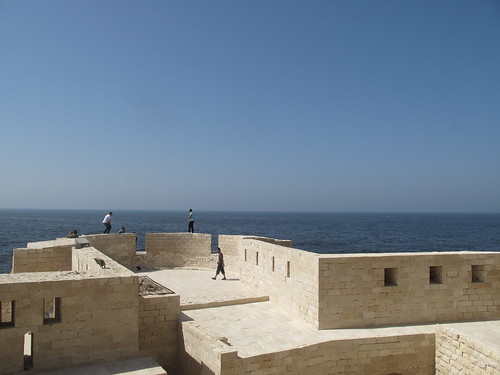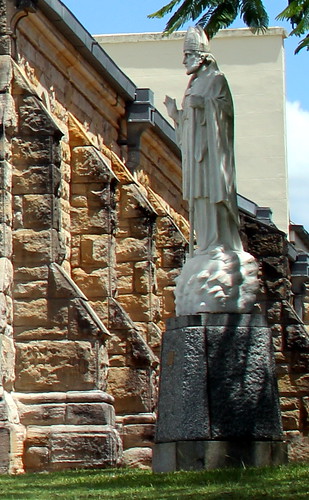By Poul Larsen
The House of Farnese established the Jesuits as a military order through the papal bull; Regimini Militantis Ecclesiae under Pope Paul III or Alessandro Farnese. The Farnese family lived in a pentagonal fortress called the Farnese Villa Caprarola in Italy and this is the basis for the US Pentagon. The leader of the Jesuits is called the Superior General of the Society of Jesus because the Jesuits are a military order. The Jesuits first general Ignatius Loyola was connected with the Alumbrados of Spain. The Spanish word Alumbrados means Illuminati and they existed more than two hundred years before the Bavarian Illuminati. Jesuit alumni dominate leadership positions in US military and intelligence as well as politics and law. The Farnese family ruled Parma and Castro of Italy and today the Princes of Bourbon-Parma covertly have authority in the US Pentagon and US military through their Jesuit intelligence.
The Farnese bloodline are intermarried with the House of Bourbon of Spain and also established the Bourbon-Parma branch in Italy which are intermarried with Dutch royalty, Belgian nobility, and the royal family of Luxembourg. Prince Edouard de Lobkowicz of Belgium married Princess Marie-Francoise of Bourbon-Parma. Prince Edouard was a banker for Chase Manhattan Bank, worked for several investment firms and was also an ambassador for the Sovereign Military Order of Malta which is stationed in Rome. The Nassau-Weilburg family of Luxembourg have Farnese blood and Grand Duke Henri of Luxembourg is a titled as Prince of Bourbon-Parma as the grandson of Prince Felix of Bourbon-Parma. The Farnese family were the Dukes of Castro and Parma and they branched into Spain. The Castro family of Cuba originated from Spain and are ancestors of the Farnese family.
Elizabeth Farnese II was the Queen of Spain and she married into the Bourbon family. Prince Carlos of Bourbon-Parma who is the nephew of Queen Beatrix has worked for the Dutch bank ABN AMRO which has a merger with the Saudi Hollandi Bank of Saudi Arabia and Prince Carlos' work was involved in implementing the Euro. Prince Carlos also worked for the European Public Policy Advisors in Belgium. Today the Bourbon King of Spain holds the title of King of Jerusalem as well as most of the monarchical titles of Italy and has Parma blood however without any Parma princely title. The House of Bourbon govern Spain and ceremonially rule over Vaticano Hill. They are one of the most powerful royal bloodlines on the Earth. The House of Bourbon control a lot of Mexico and South America and control many of the politicians and much of the organized crime in Latin America. Members of the Farnese bloodline today are Prince Carlos of Bourbon-Parma, Prince Jamie of Bourbon-Parma, Grand Duke Henri of Luxembourg, Juan Carlos of Spain, and at the head of this bloodline is Prince Carlo of Bourbon Two-Sicilia's.
Prince Carlo of Bourbon Two-Sicilies the Duke of Castro is the highest level member of the Farnese bloodline and he is one of the highest authorities in Rome's global crime syndicate. Prince Carlos is the sovereign head of the Sacred Military Constantinian Order of Saint George and the Royal Order of St. Francis I.
The Farnese bloodline are intermarried with the House of Bourbon of Spain and also established the Bourbon-Parma branch in Italy which are intermarried with Dutch royalty, Belgian nobility, and the royal family of Luxembourg. Prince Edouard de Lobkowicz of Belgium married Princess Marie-Francoise of Bourbon-Parma. Prince Edouard was a banker for Chase Manhattan Bank, worked for several investment firms and was also an ambassador for the Sovereign Military Order of Malta which is stationed in Rome. The Nassau-Weilburg family of Luxembourg have Farnese blood and Grand Duke Henri of Luxembourg is a titled as Prince of Bourbon-Parma as the grandson of Prince Felix of Bourbon-Parma. The Farnese family were the Dukes of Castro and Parma and they branched into Spain. The Castro family of Cuba originated from Spain and are ancestors of the Farnese family.
Elizabeth Farnese II was the Queen of Spain and she married into the Bourbon family. Prince Carlos of Bourbon-Parma who is the nephew of Queen Beatrix has worked for the Dutch bank ABN AMRO which has a merger with the Saudi Hollandi Bank of Saudi Arabia and Prince Carlos' work was involved in implementing the Euro. Prince Carlos also worked for the European Public Policy Advisors in Belgium. Today the Bourbon King of Spain holds the title of King of Jerusalem as well as most of the monarchical titles of Italy and has Parma blood however without any Parma princely title. The House of Bourbon govern Spain and ceremonially rule over Vaticano Hill. They are one of the most powerful royal bloodlines on the Earth. The House of Bourbon control a lot of Mexico and South America and control many of the politicians and much of the organized crime in Latin America. Members of the Farnese bloodline today are Prince Carlos of Bourbon-Parma, Prince Jamie of Bourbon-Parma, Grand Duke Henri of Luxembourg, Juan Carlos of Spain, and at the head of this bloodline is Prince Carlo of Bourbon Two-Sicilia's.
Prince Carlo of Bourbon Two-Sicilies the Duke of Castro is the highest level member of the Farnese bloodline and he is one of the highest authorities in Rome's global crime syndicate. Prince Carlos is the sovereign head of the Sacred Military Constantinian Order of Saint George and the Royal Order of St. Francis I.















